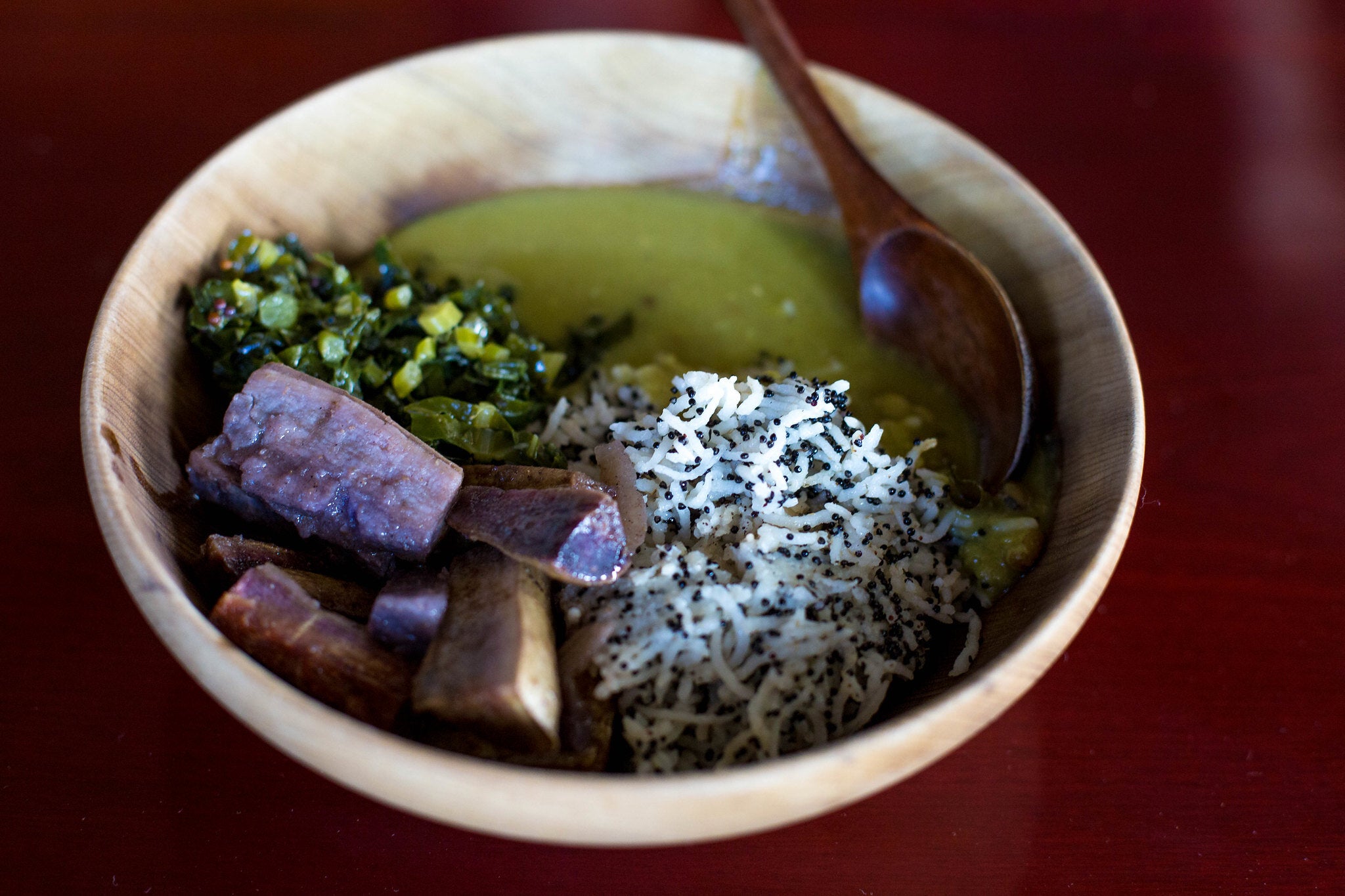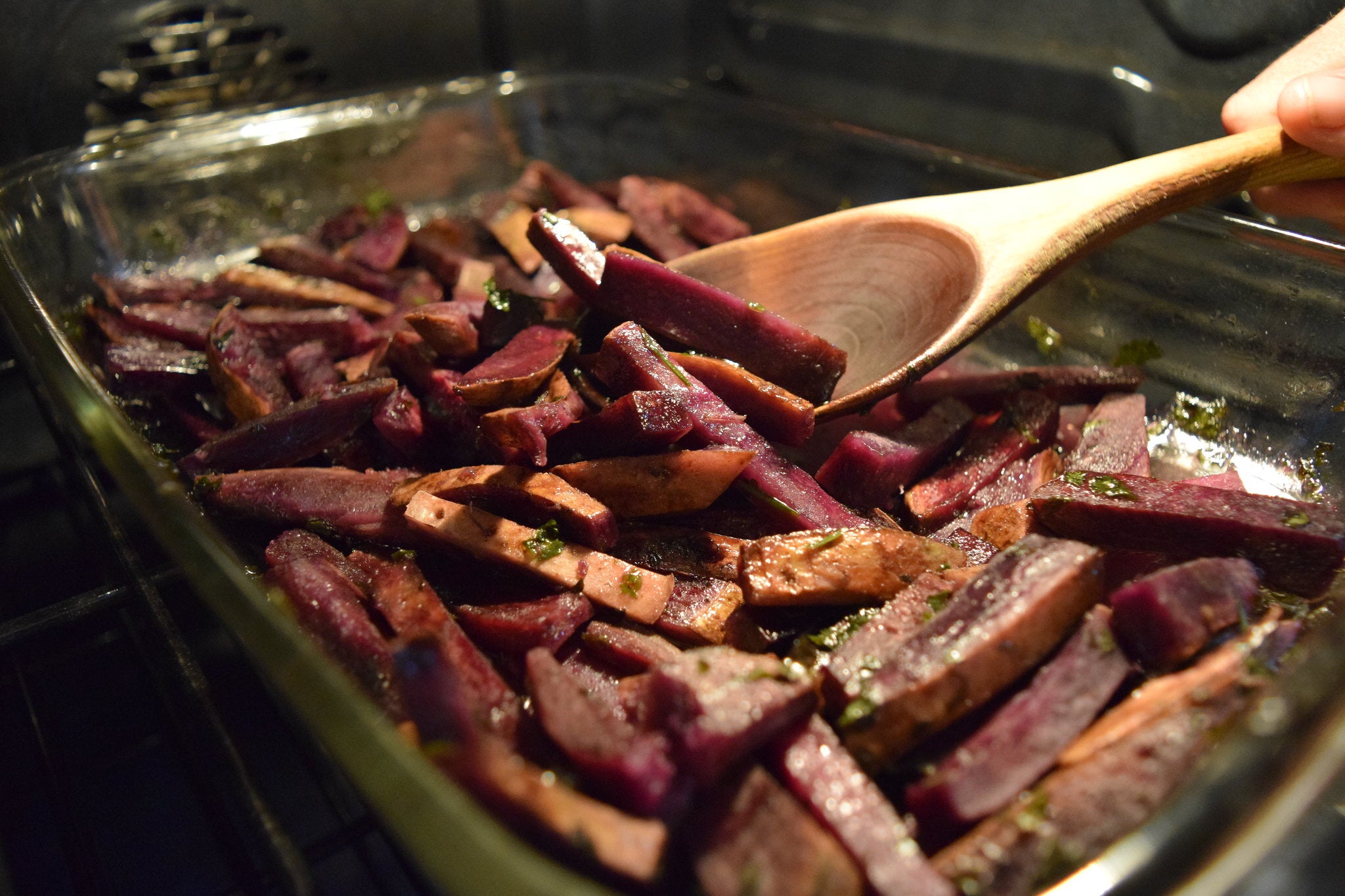
Understanding Ayurveda is not about academics and memorizing a list of rules, it is about slowing down and being in the experience of life. One of the best (and most delicious) ways to learn Ayurveda is by taking your studies to your own kitchen.
Becoming an Ayurvedic cook requires little more than a willingness to study the effects of what you eat on your body and mind (although this guide to setting up your Ayurvedic kitchen has a few other tools to get you started). Throw away limiting dosha food lists and focus instead on exploring different foods and different ways of preparing them. Pay attention to the results with a wellness journal, and you’ll soon be able to move away from black-and-white thinking about what and how to eat and toward the innate wisdom inside you.
Cooking for dosha balance
It’s not just what you eat, it’s also how you prepare your food that affects how it is digested.
You have all three doshas in you, in your unique amounts. Any of them can become imbalanced at any time. Tuning in before you start cooking is a great practice that leads you in the direction of health. What will feel good in the long run and not just on your tongue? Ask your higher self which foods will bring you closer to health and release attachment to those foods that take you farther away.
Our Ayurvedic recipe of the month (recipes, actually) gives you a chance to experiment with one food in three different ways. Each of these techniques brings different properties into the food that will work with the doshas in different ways. If you are feeling anxious, fearful, forgetful or ungrounded, calm vata with soft, nourishing foods that are mashed or pureed. If you are feeling heavy, sedentary or dull, lighten up kapha dosha with a sauteed/parboil vegetable. If you feel hot, judgmental, or impatient, help pitta find sweetness by roasting your vegetable.
We’ve chosen purple sweet potatoes for this exploration, but you can try these different cooking techniques with any vegetable you like. Not only does adjusting the style of cooking balance your doshas, it can also provide greater variety in your meals. Mashed sweet potatoes are a completely different experience than roasted. Try these different techniques and you’ll experience a familiar vegetable in new ways.
Sweet potatoes three ways
Substitute any augmenting vegetable for the sweet potatoes in these recipes. The results will be delicious no matter which technique you choose.
Vata-calming mashed sweet potatoes
Serves 4
You'll need
2 medium to large sweet potatoes cut into large cubes
1/2 tsp. cumin powder
1/2 tsp. coriander powder
1/3 tsp. salt
3 Tbsp. ghee
Water
Here's how
Heat the ghee in a pot and stir in cumin, coriander and salt. As aroma comes up stir in the sweet potatoes and add water to 1/4 height of sweet potatoes. Cover and simmer until soft. Remove from heat and mash with a potato masher or the back of a ladle. Add more water to achieve your desired consistency.

Pitta-calming roasted sweet potatoes
Serves 4
You'll need
2 medium sweet potatoes, sliced into 2-inch sticks
3 Tbsp. olive oil
1/3 cup chopped fresh basil
1/4 cup chopped fresh parsley
1/4 tsp. mineral salt
Water
Here's how
Warm the olive oil in a small pan. Add the herbs and stir gently until the aroma comes up. Pour this mixture over the sweet potatoes in a baking dish. Add water to ¼ of the height of the sweet potatoes and bake at 375F until a knife goes in easily (about 15 to 20 minutes, depending on the thickness of the sweet potatoes and your baking dish).
Kapha-calming sauteed sweet potatoes
Serves 4
You'll need
2 medium sweet potatoes cut into 1/2 inch cubes
1 tsp. fresh chopped ginger
1/2 tsp. fennel seeds
5-10 fresh mint leaves chopped
2-3 Tbsp. coconut oil
Water
Here's how
Warm the coconut oil in a saucepan and add the ginger, fennel and salt. Simmer until the aroma comes up. Stir in the potatoes, add water to 1/3 the height of the potatoes and cover. Simmer, stirring every few minutes, until a knife goes in easily (about 10 minutes).
Visit our Ayurveda Lifestyle page for kitchen essentials
